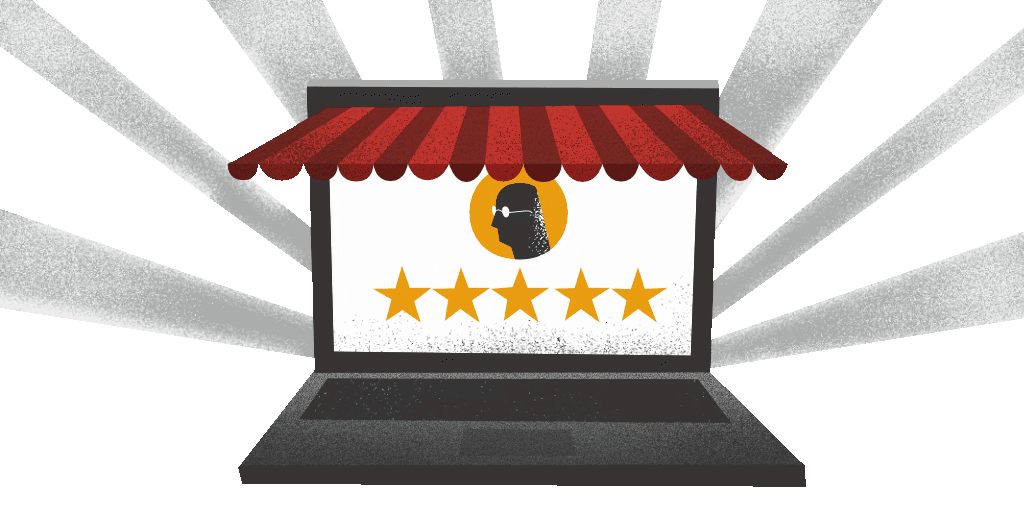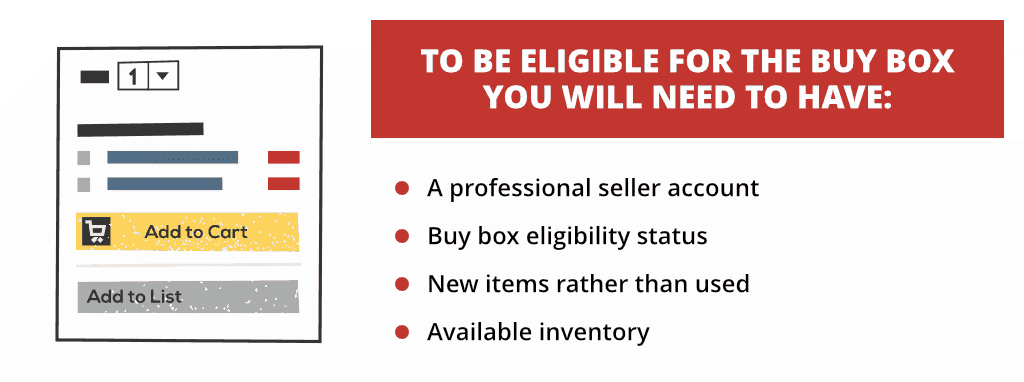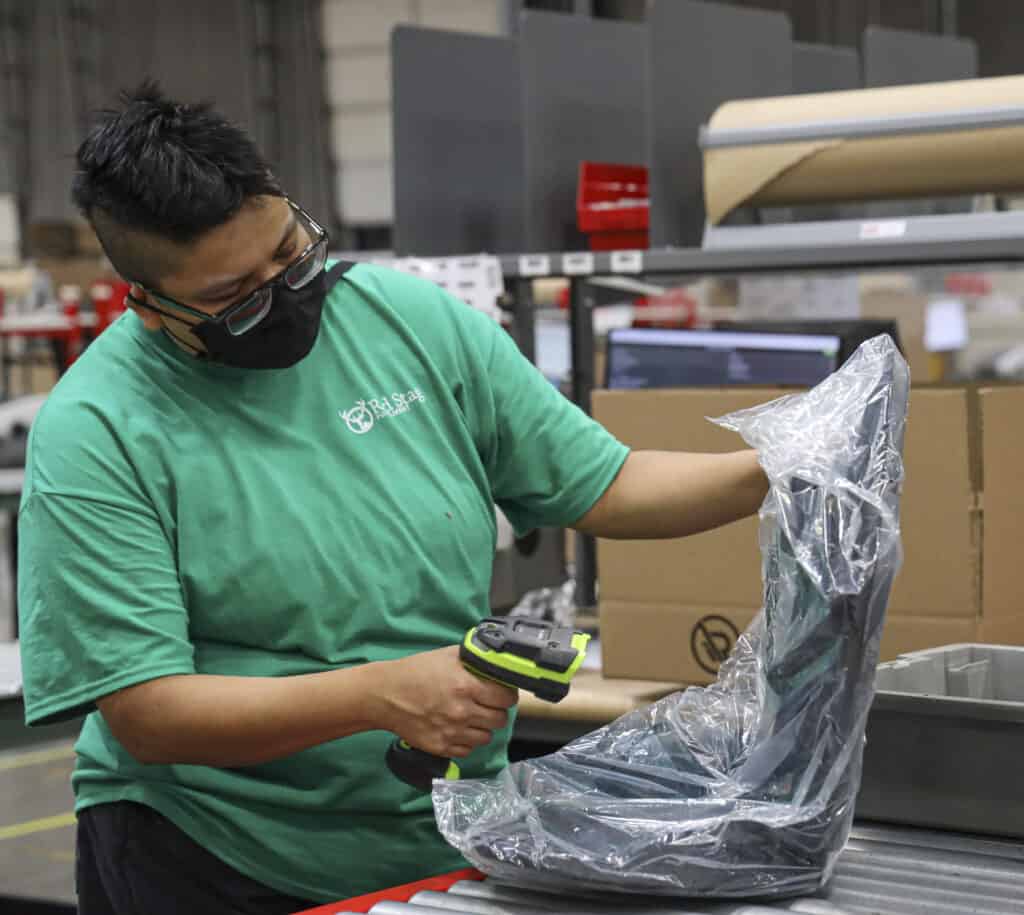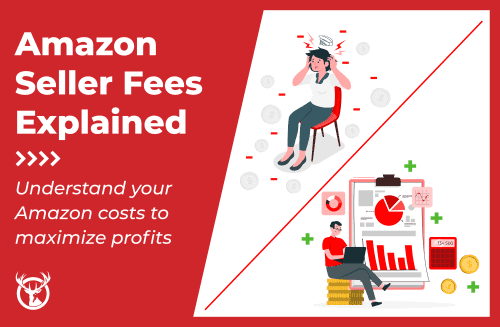For everyone planning to start an eCommerce business, there’s one question you have to answer: Is it good to sell on Amazon? Amazon is the biggest online retail site in the world, and companies ranging from major brands to people with a part-time online business want to sell on Amazon Marketplace. Even if you’re planning on building your own eCommerce website, you need to consider whether to also sell on Amazon.

Amazon isn’t just an online retail giant. Amazon FBA fulfillment centers constitute one of the world’s largest eCommerce fulfillment operations. However, it’s crucial to consider both the upsides and the many potential downsides before you decide to sell on Amazon or use Amazon FBA*.
*Nothing in this article is meant to imply a legal relationship between Red Stag Fulfillment, LLC and and any company mentioned. Red Stag Fulfillment, LLC does not own any other company’s trademarks referenced or included in this article. Information gathered for this article came from a mix of publicly available news and websites, websites of the companies mentioned, and direct communication with named companies.
What are the benefits if I sell on Amazon Marketplace?
Selling on Amazon offers many genuine benefits. Here are just a few.
It’s easy to get started.
It just takes a few minutes to set up an account and become a third-party seller on Amazon. If you want to try out online selling, an Amazon business is an easy entry point.
Amazon takes care of payment processing.
To sell online, you need to accept electronic payments. While it’s not hard to set up a merchant account, there are hassles. If you get a fraudulent charge on a stolen credit card, the processor will refund the customer, and you are out the money. Amazon sellers don’t have to worry about fraudulent charges or handling money because Amazon takes care of payment processing and deals with any issues.
You don’t have to build an eCommerce website.
Building an online store no longer requires complex coding. With eCommerce platforms like Shopify and WooCommerce, you can get set up easily. However, when you sell on Amazon, you don’t have to do any building. You simply write product descriptions and upload photographs, and your listings are ready to go live.

Amazon reaches a vast number of consumers.
Almost three-quarters of product searches start on Amazon. You can think of Amazon as the Google of online shopping (although Google would like to be the Google of online shopping). Selling on Amazon puts you in the center of the online commerce world, where most consumers go to shop. As an Amazon seller, you’re more likely to be found by the people who want to buy your products.
You can list as few or as many products as you like on the Amazon Marketplace.
Your Amazon product listings are flexible. You don’t have a web store to populate, so you can start slowly by listing just a couple of items. As you grow, you can expand your offerings easily. You don’t have to rework your website to keep your growing number of products organized because Amazon has done that for you.
Seller Central has answers to many of your questions.
Amazon Seller Central is a site dedicated to sellers. You can ask questions and get help, sign up for services, and make customer service inquiries, all in one place. Seller Central includes forums where you can get help from other sellers who have dealt with whatever issues you’re facing. In fact, it’s a great idea to read through several forum posts before you get started selling on Amazon. That will give you a better idea of what to expect.
Some people have built successful businesses selling on Amazon.
A recent survey of Amazon sellers found that 26% sold less than $1,000 per month, and 4% didn’t know how much they sold. Another 20% make between $1,000 and $5,000 per month, which is enough for a nice side hustle or even a decent income. Of the people that responded to this survey, 38% earned $10,000 or more per month, or $120,000 per year. So, it is possible to run a large enterprise as an Amazon seller if that’s your goal. However, there are some dangers unique to successful Amazon business owners (see the next section).
What are the potential problems with selling on Amazon?
Because Amazon is so dominant in eCommerce, selling on Amazon can feel like more of an obligation than a choice. However, sellers have faced severe drawbacks. The downsides of doing business with Amazon have led even some major brands to pull out of the site.
Your reasons for choosing Amazon Marketplace may be excellent, but you should be aware of the risks of selling on Amazon before you sign up.
Competition for the Buy Box is fierce and sometimes dirty.
The Buy Box is Amazon gold. It lets shoppers easily buy that item with a quick click, so the competition to win the Buy Box is fierce. If your product has the Buy Box, other sellers will sometimes resort to underhanded tactics to steal it from you. When that happens, dealing with the fallout can be time-consuming and expensive.

One dirty trick that sellers have reported is that they get a big sale, cleaning out their inventory for a product. Until they can restock, someone else gets the Buy Box. Then, the buyer who made the big purchase returns it, so you miss out on a busy sales season.
Amazon’s rules are strict and often enforced arbitrarily.
Amazon holds its sellers to strict standards. You need to have excellent reviews, few returns, and a track record of on-time delivery. The company takes customer complaints seriously, which can get sellers into trouble, even when they are in the right.
If you get banned or have a product delisted, it can be hard to restore your Amazon listings.
If Amazon determines that you have violated a rule or don’t meet its standards, you could get banned. For people whose primary business is to sell on Amazon, a ban can be devastating, and it can take months of effort to get a ban reversed.
Because of price competition and Amazon rules, it can be hard to make a profit.
The Amazon Marketplace exerts downward pressure on prices. That’s great for consumers, but it can be challenging for sellers trying to make a profit. You might find that you have to reduce your price on a popular product to retain the Buy Box, and that can squeeze your margins.
You’re competing with Amazon-branded products, and Amazon has all the data.
Amazon is a data company as much as an eCommerce company. It has data on everything that sells on its platform. The company can use that data for its own product development and marketing. Sellers with popular products might find their products in competition with items made and sold by Amazon. When that happens, Amazon items usually get the Buy Box.
You don’t have control over your own business.
When you sell something on Amazon, the customer is Amazon’s, not yours. While there are benefits of that—the customer has the confidence to buy your product because of Amazon’s customer service, for example—it’s also a lost opportunity. You don’t build customer relationships. Their loyalty is to Amazon, not to you.
And, as mentioned above, Amazon gets the final word on your Marketplace sales, which can put you out of business in an instant.

Ways to source products to sell on Amazon
If the positives outweigh the negatives, your next question is where to get items to sell on Amazon. Here are four popular options.
- Retail arbitrage. Retail arbitrage is finding discounted items in retail stores and then selling them for a profit. If you like to shop, this can be a fun way to sell on Amazon. Your margins probably won’t be as high as other selling options, but arbitrage can be an easy way to get started.
- Drop shipping. Drop shipping is another low-investment way to start an online business. With the drop shipping business model, you list products for sale, but you don’t purchase a product from the manufacturer until your customer buys it. The manufacturer ships orders directly to your customers. Amazon allows drop shipping. Make sure you check out the pros and cons of drop shipping before choosing this method of selling on Amazon.
- White label products. If you want to build a brand, you can purchase items from manufacturers and have them labeled with your branding. You’ll have a better chance of making a profit with this strategy, but it requires more upfront investment.
- Sell your own brand. If you’re already producing products, you can sell them on Amazon. Just be sure you understand the risks of knockoffs and counterfeit products for sellers in the Marketplace.
Of course, you can also buy products wholesale from other brands and retail them on Amazon.
Should Amazon sellers use Fulfillment by Amazon (FBA)?
Like every aspect of doing business with Amazon, FBA comes with benefits and drawbacks.
Benefits of Amazon FBA
- You get access to Amazon’s logistics services, which are some of the best in the world.
- Amazon will get your products to your customers quickly.
- You can offer Prime shipping, which increases sales.
- Amazon manages your order fulfillment, so you don’t have to.
- FBA can ship orders from other sales channels, not just Amazon.

Drawbacks of Amazon fulfillment
- When warehouse space is limited, Amazon limits how much you can ship to FBA. This can make it hard to meet your sales potential.
- Amazon has strict rules for inbound shipments. If you don’t pack and label your products to its specifications, your shipment may be sent back.
- Receiving can be slow. That may delay your sales, especially if an item is out of stock.
- Orders ship in Amazon boxes, not your branded packaging.
While its warehouse and pick and pack services are excellent, you should consider the pitfalls of Amazon FBA before you trust Amazon with your order fulfillment.
Alternatives to selling on Amazon and Amazon FBA
When you sell on Amazon, you are a number. The company views you only as a unit of profit. Here are some Amazon alternatives every eCommerce entrepreneur should consider:
- Sell on a marketplace that specializes in the types of goods you sell. For example, you could sell handmade or craft items on Etsy or electronics on Newegg.
- Create a branded website where you can curate your customers’ online shopping experience.
- Build a storefront on an eCommerce platform such as BigCommerce or Magento.

And, while Amazon FBA seems like an easy solution, you should consider FBA alternatives. Red Stag Fulfillment delivers high-quality 3PL services that get your orders out fast. And, when you work with us, you retain control. We can ship in your branded boxes, and we work with you to create a fulfillment experience that your customers will love.
Your decision about Amazon doesn’t have to be all or nothing. Many eCommerce companies sell on Amazon as well as other eCommerce platforms and their own websites. You can use FBA for some orders and a 3PL like Red Stag Fulfillment for others. If you need help figuring out whether it would be good for you to sell on Amazon, give us a call. We can talk it through together.
More about selling on Amazon:
- How to Sell on Amazon: The Complete Guide
- 4 Tips for Getting Customer Reviews on Amazon
- Amazon Listing Optimization













